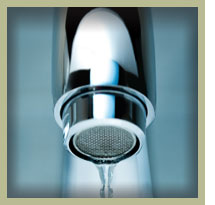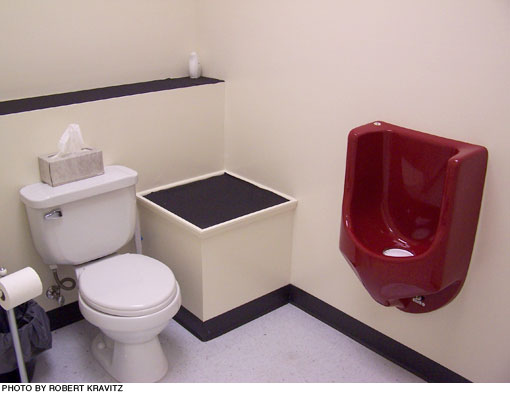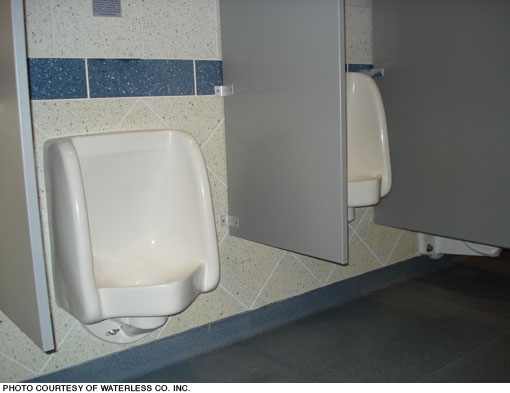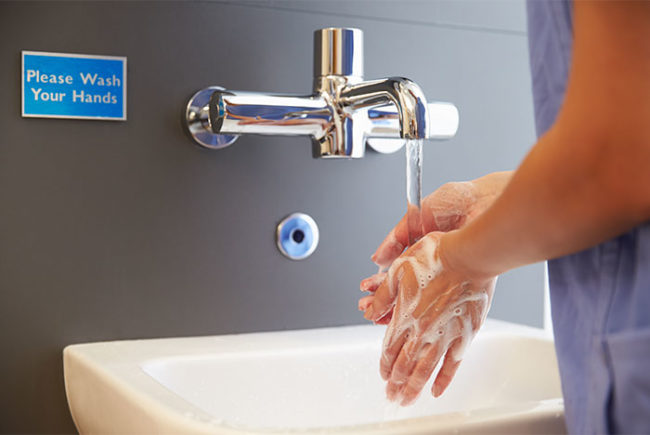 Health care-related challenges, specifically increasing costs, are topics being discussed just about daily in the United States. And the issue is about to be further complicated since the U.S. Census Bureau predicts that the number of Americans beyond the age of 65, which is the age group that typically uses health care facilities most frequently, is set to double by 2030.
Health care-related challenges, specifically increasing costs, are topics being discussed just about daily in the United States. And the issue is about to be further complicated since the U.S. Census Bureau predicts that the number of Americans beyond the age of 65, which is the age group that typically uses health care facilities most frequently, is set to double by 2030.
A related challenge is that there will be a greater water demand for washing, bathing, laundry, sterilizing equipment and other cleaning tasks in health care facilities. Furthermore, the greater hygiene requirements in medical facilities will likely be expanded, demanding more water, placing even more demands for potable water supplies in medical locations.
For instance increased hygiene demands are leading to many new plumbing features in hospitals, including the following:
- More hand-washing stations installed in patient rooms.
- Toilet rooms serving no more than four beds and no more than two patient rooms.
- Every toilet room including a hand-washing station.
- Hand-washing stations also being added to nursing stations, exam areas and "clean" storage areas that contain items used for patient care.
Hospitals already consume huge volumes of water. But especially now as patient populations, the cost of water throughout the United States, and the cost of energy — closely tied to water costs because it is necessary to transport and remove water from a facility — are all escalating, hospital managers have no choice but to find ways to reduce water consumption wherever possible.
Fortunately, this is not an insurmountable issue. Nearly half of all the water used in a medical location is typically used in restrooms for washing, bathing, flushing and so forth. That makes medical facility restrooms the most obvious and cost-effective areas to begin a water conservation program.
In fact, with some new technologies, such as low-consumption fixtures and controls, the savings can be dramatic. These newer technologies can help cut water use immediately and significantly reduce the amount of water used in the facility for years to come.
 |
| A restroom in a health care clinic. |
Fixture fixation
In the late 1980s, a rehabilitation and long-term living center was built in the Chicago area that maintained a well-managed, skilled engineering staff. Today, the center is proud of the fact that it has experienced few plumbing problems in its nearly 30 years in existence. Due to the installation of high-quality fixtures, along with proper maintenance, most of the patient and visitor bathrooms throughout the location had until recently original fixtures.
However, in this case, the longevity of these fixtures became a negative. Most of the toilets used three or more gallons of water per flush, as did the urinals. Some of the original faucets were retrofitted with flow restrictors; however, most faucets were manually operated. When left running, as happened regularly, the value of installing flow restrictors was essentially eliminated as potable water was literally wasted down the drain.
Looking for water and cost savings, the center began an aggressive restroom fixture retrofitting campaign with the goal of replacing all older restroom fixtures with water-conserving fixtures within a two-year time period. Some of the steps it took, which can be used as a guide for many other medical-related facilities, included the following:
Hand-washing faucets. Due to concerns about disease, hand-washing protocol in most medical facilities has been increased significantly. This has increased water consumption considerably and manually operated faucets are not always fully turned off after use. Additionally, users tend to leave the water running while lathering their hands or grabbing for a paper towel to dry their hands, which compounds a facility's water concerns.
A faucet with a flow restrictor installed can still use more than two gallons of water per minute. This means if the water is left running, even for 30 seconds while lathering or grabbing a paper towel, one gallon of water could be wasted.
The center replaced the manually operated faucets with sensor-operated fixtures that use less than one gallon of water per minute. But what has proven to be the significant water saver with these faucets is that water stops flowing as soon as hands are removed from the "active area." This significantly reduced waste and water consumption. Additionally, energy savings were noted because less heated water was wasted.
Toilets. The center had about 50 toilets using approximately 4.5 gallons of water per flush installed when the building was originally constructed. Replacing all of the old toilets with ultra low flow (ULF) toilets, which use about 1.6 gallons of water per flush, the center was able to save close to 1 million gallons of water annually. The cost to replace the toilets was about $15,000; however, with water and sewer savings, the payback was less than two years.
There are actually a number of new toilet technologies that are proving to be very beneficial when it comes to saving water. One type of system growing in popularity is dual-flush toilets. These systems offer 1.6 gallons per flush or less to remove solid waste and about .8 gallons per flush to remove liquid waste. The handle or buttons on the toilet allow users to decide which flush is needed. A study by Purdue University, from June 2004 to June 2005, found there was a 45 percent reduction in water use when these systems were installed.
Taking it a step further, air-compressed toilets, similar to what are found on airplanes, are growing in popularity in areas of the country where water problems are severe. A perfect example is Las Vegas. Many of the newer, larger hotels have installed these systems, which use a combination of compressed air and water to quickly and effectively remove waste from the bowl.
Urinals. The center had approximately 20 urinals using about 2 to 3 gallons of water per flush. About half of these urinals were replaced with low-flow urinals, which use about one gallon of water per flush, and the other half with no-water or waterless urinals, which operate with no water at all. Facility managers decided to take this approach because no-water systems at that time were viewed as a relatively new, untried technology.
 |
| Waterless urinals installed in a San Diego facility. |
Both systems proved satisfactory in performance and water conservation, and return on investment was about 18 months. However, as to return on investment, the no-water systems proved to have an edge. The reasons for this were twofold: first, the no-water systems used no water at all so water and sewer charges were essentially eliminated. Second, the systems cost less to select because there were no flushing mechanisms, manual or electronic, to purchase or install.
More water savings
In addition to the center discussed above, a number of other water-saving fixture installations have been documented to save money for health care facilities. The following facilities, which use dollar amounts from approximately five years ago, provide more examples:
- A hospital in Massachusetts, replaced faucets that used as much as 5 gallons of water per minute with faucets that use about 1.5 gallons per minute. The savings in water was about 32,000 gallons of water per year, amounting to a savings of $280 annually per sink.
- New England Memorial Hospital replaced more than 300 toilets, using approximately 4.5 gallons per flush, with toilets that use 1.6 gallons per flush. The amount of water saved is more than 5 million gallons annually, which results in a cost savings of about $42,000 each year.
- A Northern California clinic replaced 14 older urinals, which used about 3 gallons per flush, with urinal systems that use no water. The hospital estimates that it now saves about 280,000 gallons of water annually, producing a cost savings of more than $2,100 per year.
Hope for water
When discussing future water issues, the conversation often turns dour. However, although much more needs to be done, there are steps that can be taken now that save not only water but cut costs as well. Entire cities such as Los Angles and Phoenix now use less water per person than they did 10 to 15 years ago. This is because they have active water reducing programs and take advantage of many of the technologies mentioned here.
Klaus Reichardt is founder and CEO of Waterless Co. Inc., Vista, Calif. He can be reached at Klaus@waterless.com.





